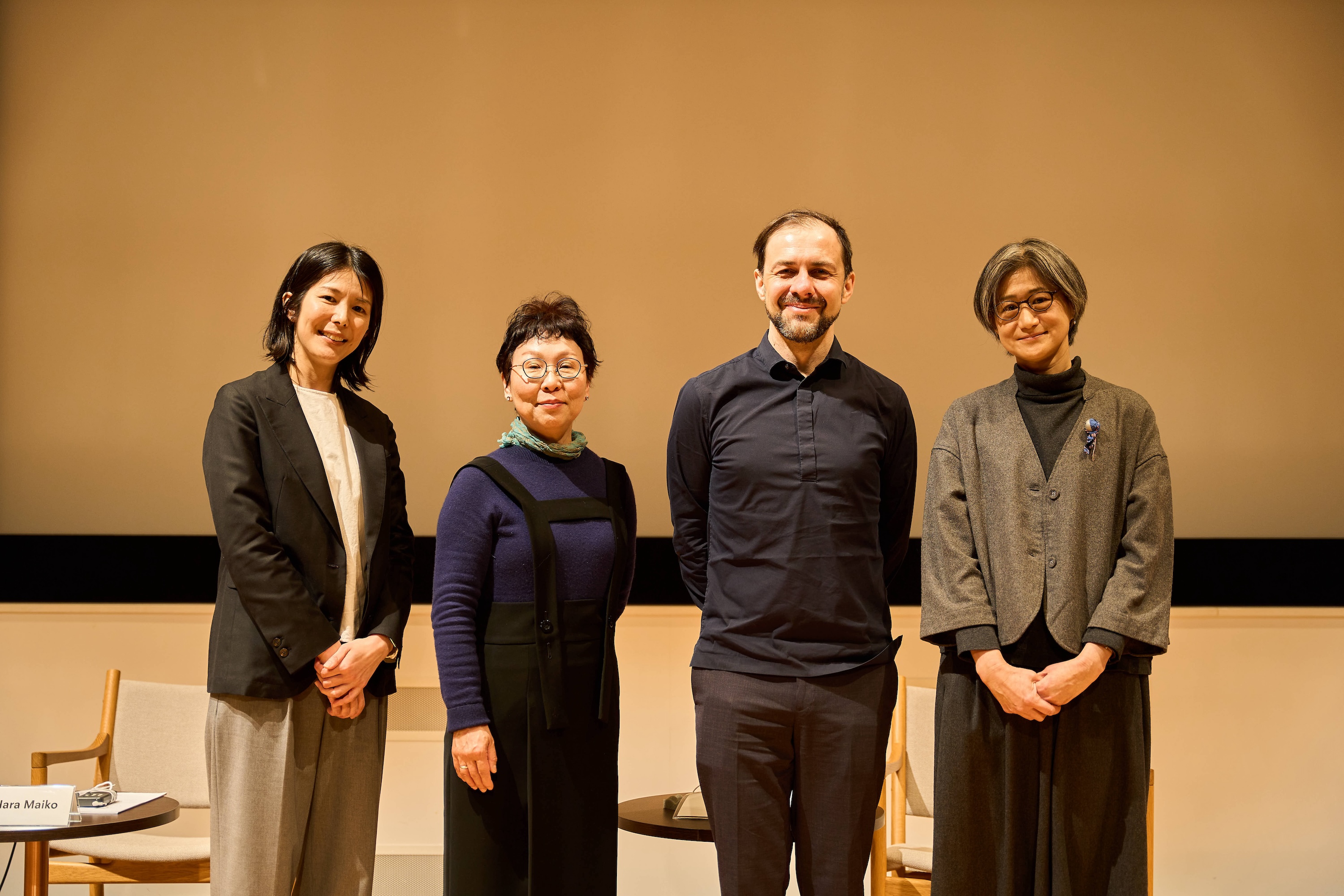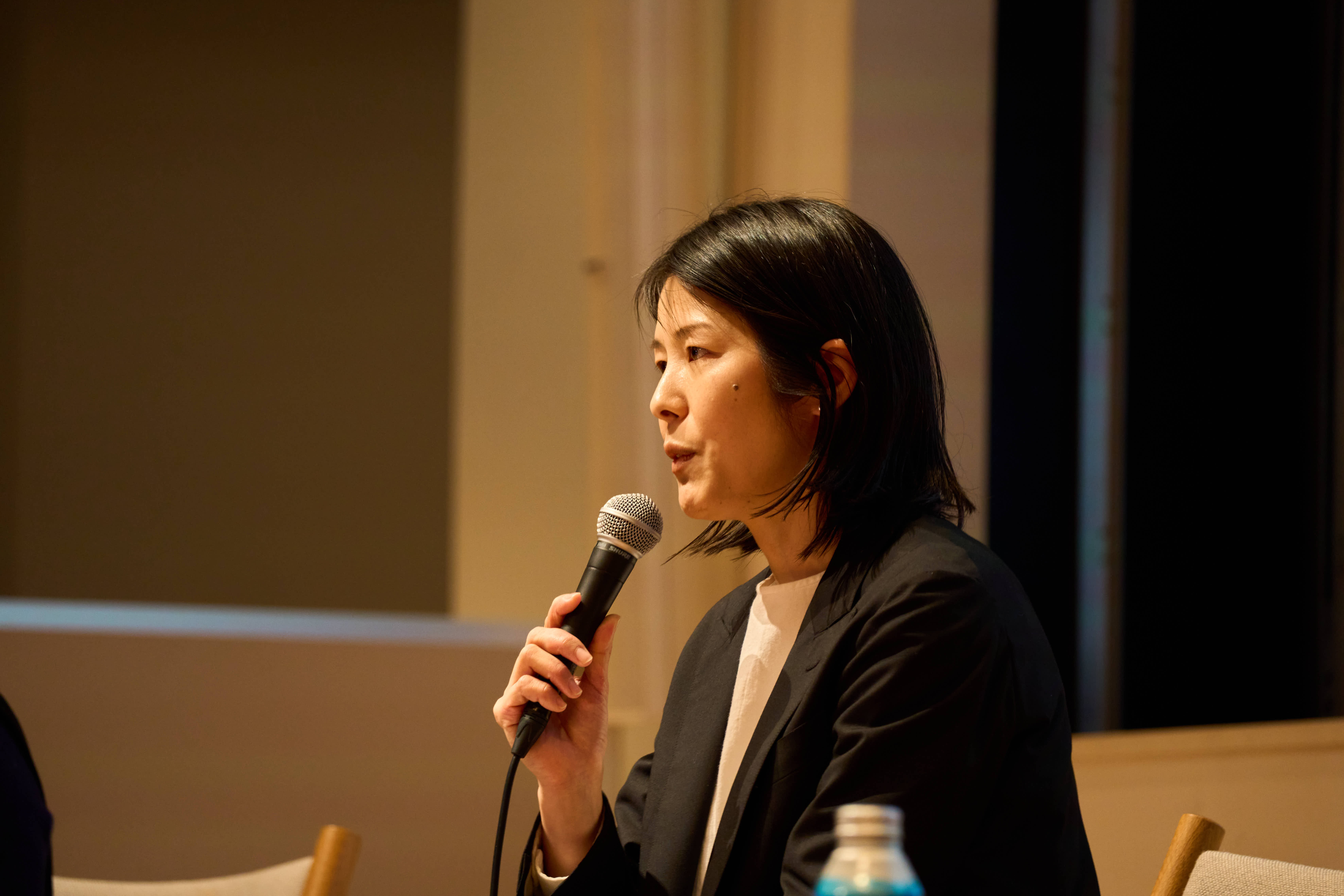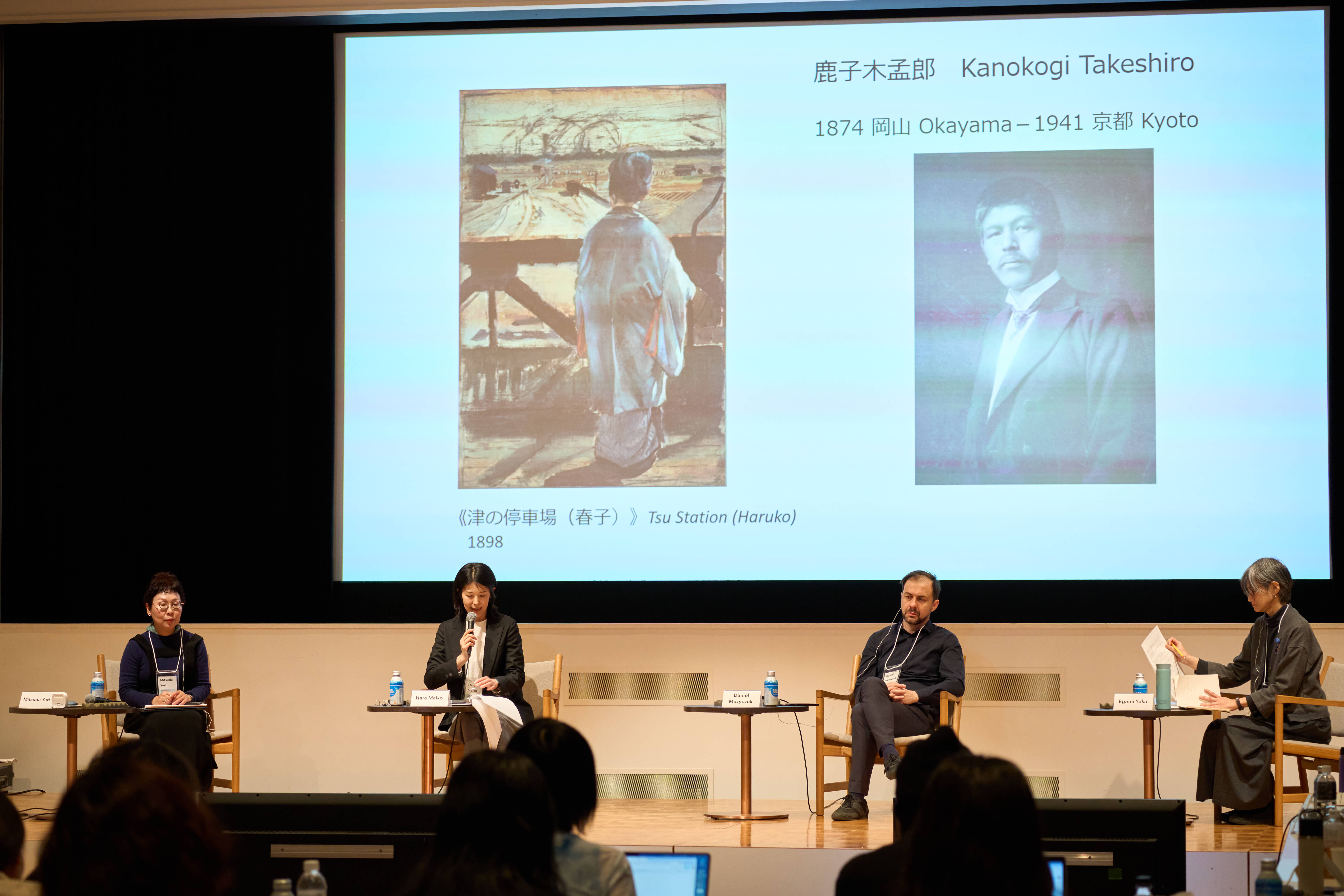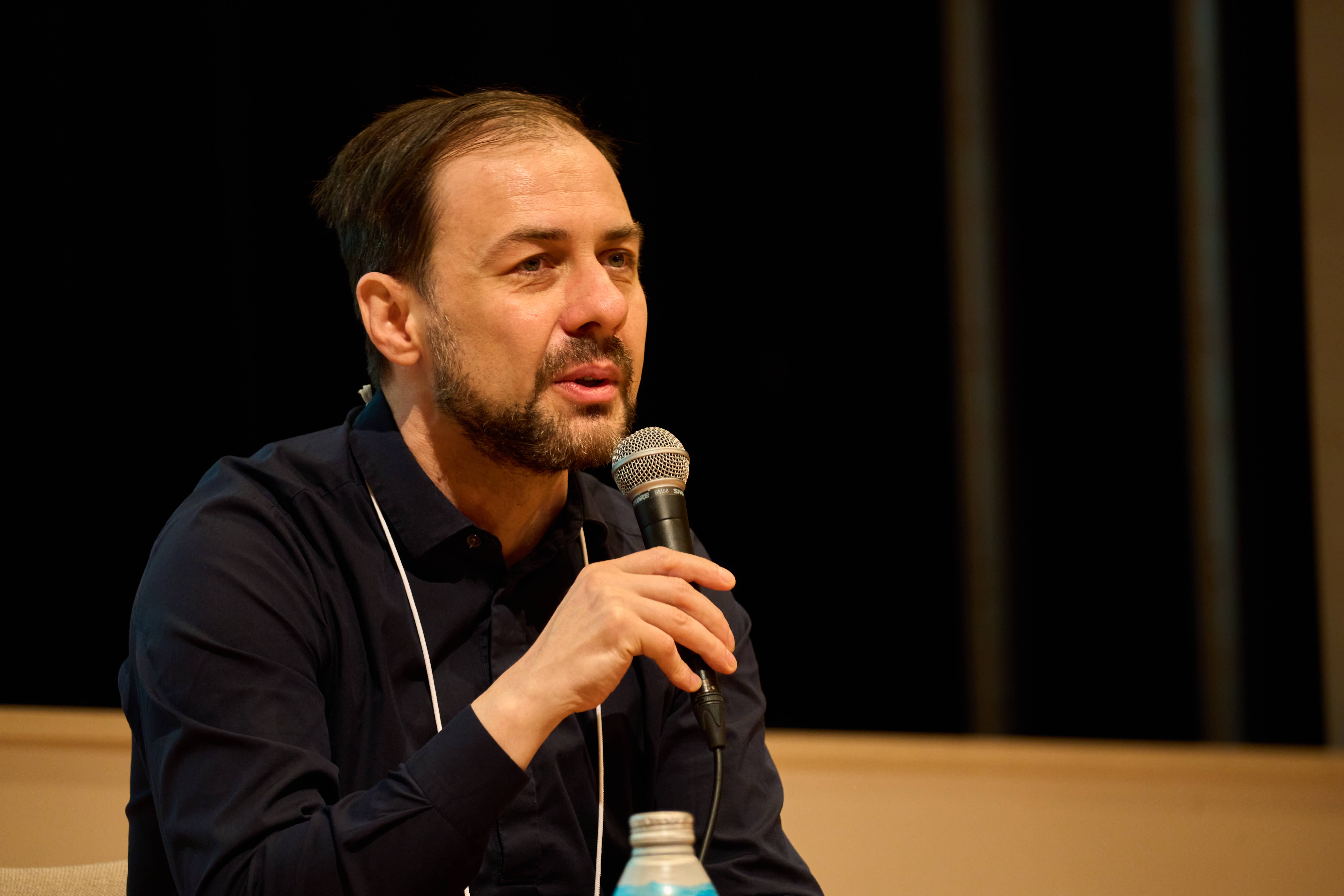How Do Museums Utilize Archives? "National Center for Art Research International Symposium and Workshop 2023" Report #1
Workshop view Photo: Ken Sengoku (.new)
The National Center for Art Research (NCAR), which aims to be a new hub for promoting art in Japan with the mission to "Connecting, Deepening, and Expanding the Art," held the "National Center for Art Research International Symposium 2023—Museum and Research: What does it mean to 'deepen' art?" at the National Art Center (Nogizaka, Tokyo) on March 22, 2024.
Four workshop sessions featuring curators, artists, and experts were held from March 21 to March 22 prior to the symposium. The first session focused on the theme of "Museums and Archives." In the first half, panelists from domestic and international museums presented examples of collection and archival practice and raised questions concerning archiving artwork and materials. In the second half, while sharing the difficulties of accepting donated works, participants discussed and gave examples of archive utilization.
◎ Panelists:
Maiko Hara (Curator, Mie Prefectural Art Museum)
Daniel Muzyczuk (Head of Modern Art Department, Muzeum Sztuki, Łódź)
Yuka Egami (Curator, Hyogo Prefectural Museum of Art)
◎ Moderator:
Yuri Mitsuda (Director, Tama Art University Art Archive Center)

Maiko Hara: Donation and Utilization of Miho Akioka's Artwork
Contemporary artist Miho Akioka, who passed away in March 2018 at 65, spent the latter part of her life in Mie Prefecture. After being approached by Akioka's family members, the Mie Prefectural Art Museum surveyed and categorized over 100 works the artist left behind. Based on this data, approximately 40 works have been collected by 13 museums in Japan with a connection to Akioka (as of March 2024).
On the third anniversary of Akioka's death in the spring of 2020, the Mie Prefectural Art Museum held an exhibition showcasing the entire collection, and the Aichi Prefectural Museum of Art, which also owns Akioka's works, held a special exhibition in the autumn of 2020. In addition, the museum occasionally received inquiries from other institutions regarding the display, storage, and framing of artwork.

Given the above, Hara raised two key points:
1. It is essential to create a network that supports exchanging information on works and exhibitions so the museum can overcome the loss of the artist or the curators who have worked with them. It is crucial for museums to be open to visitors and curators and for information to be accessible from anywhere.
2. Local museums are important for local artists. While collecting the works of a single artist in one museum is valuable, a structure in which the works are distributed to museums in different regions and stored and exhibited collectively would be a beneficial mechanism for future research and exhibitions. However, having a museum that acts as a hub is crucial to achieve this.

Daniel Muzyczuk: Archiving and Reproducing Exhibitions under the Socialist Regime
Muzeum Sztuki, located in Łódź (pronounced "wooch"), the second largest city in Poland, specializes in modern and contemporary art, focusing on the history of avant-garde art, mainly from Central and Eastern Europe. After World War II, Poland fell under the influence of the Soviet Union and the socialist regime, resulting in a period when most abstract paintings were banned from exhibitions. However, since the 1960s, the Muzeum Sztuki has been working on reproducing and exhibiting the destroyed works, using archival materials such as photographs taken at the time of the work's creation. Muzyczuk also noted that it is essential to use archives to approach art.

In addition, Muzyczuk mentioned the possible untold influences and connections between post-war Japanese art and the Muzeum Sztuki. For example, in the mid-1960s, when overseas travel was rare, the art critic Yusuke Nakahara (1931-2011) chose Poland as his first destination, allowing him to experience abstract art. Moreover, the museum's former director, Ryszard Stanisławski, often visited Japan and offered the facility as a venue for tours of Japanese art in Europe.

Yuka Egami: Contemporary Art in the Kansai Region and "Shinanobashi Gallery" Archive
The Hyogo Prefectural Museum of Art, formerly known as the Hyogo Prefectural Museum of Modern Art, first opened in 1970 and reopened at its current location in 2002 as a symbol of cultural reconstruction after the Great Hanshin-Awaji Earthquake of 1995. The Art Information Center (library) adjacent to the museum is described as one of the largest in the Kansai region, providing access to over 120,000 books and materials.

As a representative case, Egami introduced the research and cataloging of the materials related to Shinanobashi Gallery, a rental contemporary art gallery that operated in Osaka from the 1960s to 2010. The gallery owner donated approximately 3,900 items, including artworks, exhibition direct-mail postcards, and visitor records, to the Hyogo Prefectural Museum of Art. Utilizing these items, the museum held the "Shinanobashi Gallery Collection" exhibition featuring gallery exhibition photographs and interviews with the artists. In particular, Egami noted that interviewing people associated with the gallery was "an attempt to preserve things that were not recorded originally because they were so ordinary and mundane."
In addition, Egami introduced the management of paper materials and "artist files" that had been collected since the days of the Hyogo Prefectural Museum of Modern Art. She continued by saying that a fundamental question for a museum with a collection is how to capture the "very personal experiences of ordinary viewers" associated with the works, which are not written down but are essential to establishing the reality of the details.
Discussion
The second half of the session featured discussions with questions from the audience. For the first question, an audience member with experience teaching at art universities in Japan and the UK addressed the current reality in which even art history students limit their research to easily accessible digital resources and often avoid visiting libraries, and questioned how archives can be utilized and made more interesting.

Drawing on her experience as director of the Tama Art University Art Archive Center, moderator Yuri Mitsuda pointed out that "today's students may lack the awareness of being part of the history, starting with Marcel Duchamp, or the experience of thinking about the relationships between themselves and the works of others." As an example, Mitsuda shared the Archive Center's display of an artist's books formerly owned by the poet and art critic Shuzo Takiguchi (1903-1979). She concluded, "We are trying to create 'experiences' out of information that would otherwise simply disappear online."
Egami observed that when she taught a course to undergraduate students majoring in video games and animation, the students showed great interest in the art infrastructure surrounding young artists of the 1980s and how they used art galleries to exhibit their work. She added: "We need to be creative in connecting and presenting archives according to users' interests."

A second questioner asked what could be done to make the things absent from the archives accessible to viewers and what role curators should play in this process.
Muzyczuk spoke of the blank period in the archives, which occurred when Poland was divided by war and socialism. In the 1950s, at the artists' suggestion, an initiative was launched to reproduce paintings from the 1930s using preserved materials. Muzyczuk also quoted memorable words from the artists: "The reproductions embody the originals."
Egami touched on the fact that in the 1980s, works by young Kansai artists were rarely sold, and many were discarded at art universities. She concluded, "It is crucial for curators to archive the process of exhibiting contemporary artwork, especially installations, so that it can be accessed as open information."

Although the backgrounds, environments, activities, and circumstances differed, the cases illustrated each museum's unique approach and stimulated lively discussion throughout the session.
Find more articles on the "NCAR International Symposium and Workshop 2023":
Naomi



